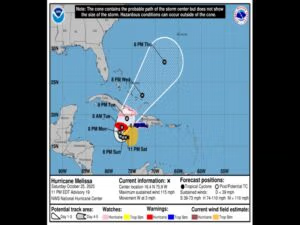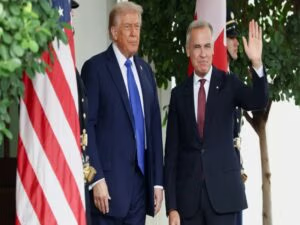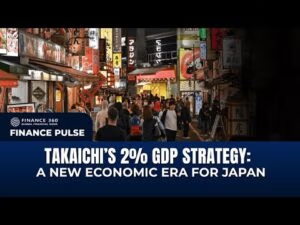J.P. Morgan Private Bank has released its 2025 Mid-Year Global Investment Outlook, Comfortably Uncomfortable. As foundational elements once deemed stable, such as a robust economic expansion, minimal new trade barriers, and sustained investment in artificial intelligence, are being re-evaluated, the outlook highlights areas of opportunity in a world where returns across various asset classes have shifted significantly compared to the previous year.
“Portfolio resilience emerged as a key theme in our 2025 Outlook, underscoring its heightened relevance as investors navigate a new reality,” said Grace Peters, Co-Head of Global Investment Strategy at J.P. Morgan Private Bank. “Investors must contend with deep policy uncertainty, still elevated valuations and concentration in U.S. equity markets, and persistent volatility as they anticipate whether the U.S. administration’s more market-friendly proposals will come to fruition in the latter half of 2025.”
“Given the balance of risks, and the possibility of a downtrend for the U.S. dollar, a resilient and globally diversified portfolio can help give investors the confidence to stay anchored to their long-term plan. With the likelihood of continued market volatility, it’s time to get comfortable being uncomfortable,” said Stephen Parker, Co-Head of Global Investment Strategy.
To navigate the global economic landscape, J.P. Morgan Private Bank’s 2025 Mid-Year Global Investment Outlook addresses four key themes:
Portfolio Resilience & Global Diversification: Anchoring Stability in Shifting Markets
Today, investors are confronted with dual risks related to growth and inflation, alongside enduring policy uncertainty and geopolitical changes. In our view, resilient portfolios composed of assets with low or negative correlations, each capable of outperforming cash, are more critical than ever.
“Diversified hedge fund strategies are expected to deliver returns and volatility that are slightly higher than core fixed income, with very low correlation,” said Nur Cristiani, Latin America Head of Investment Strategy. “Equity-linked structured notes can provide investors with an additional lever to generate income uncorrelated to fixed income, with twice as many clients utilizing these notes this year compared to 2024.”
“Beyond U.S. equities, Europe’s economic outlook has been brightening as investors focus on the headwinds to U.S. growth,” Erik Wytenus, Europe, Middle East, and Africa Head of Investment Strategy. “Europe is decisively pursuing self-reliance in security, with Germany loosening the tight fiscal faucet in long-neglected areas like defense and infrastructure. This seismic shift could boost annual Eurozone growth from a tepid 0.5% pace in 2025 to over 1%, possibly as much as around 1.5% in 2026.”
Currency Conundrum: The Dollar’s Journey in a Post-Exceptionalism Era
As U.S. exceptionalism shifts, the dollar faces pressure from rising protectionism and potential deficit-increasing fiscal policies, likely leading to a gradual erosion of its value rather than a collapse of its reserve currency status.
“For U.S. investors, diversifying currency exposure through equities denominated in Euro or Yen can help mitigate potential losses associated with dollar depreciation,” said Jacob Manoukian, U.S. Head of Investment Strategy. “We are focused on the Euro, Japanese Yen, and gold due to their size, liquidity, and historical role as alternative reserve assets.”
Central banks, with nearly $13 trillion in reserves, have already increased allocations to these currencies, reflecting their deep, liquid markets and potential for preserving purchasing power. Gold also continues to stand out against geopolitical risks and dollar weakness, with demand expected to rise as emerging market central banks increase their gold reserves.
Artificial Intelligence: Underestimated Potential in a Distracted Market
Amid investor focus on tariff policy, the transformative advance of Artificial Intelligence (AI) persists, defying initial skepticism from disruptive news, as Chinese startups and tech companies challenge assumptions about the resources required for high-performing AI models. “We are increasingly confident that AI is likely to drive significant productivity gains, particularly sectors poised to benefit such as software and financials,” shares Alex Wolf, Asia Head of Investment Strategy. “As the AI race hits a pivotal moment, research labs are driven to secure funding and innovate self-improving models, while heightened competition is set to lower prices, foster differentiation, and accelerate adoption.”
Agentic AI, with human-like intelligence, is poised to lead the next global software wave, potentially surpassing cloud and mobile transitions by targeting employee compensation costs. While the ultimate winners of the AI race may not yet exist, the market shows resilience, with stock prices rising alongside earnings and capex not reliant on traditional financing.
Alternative Dealmaking: Secondary Markets and Evergreens Take Center Stage
While there were green shoots to start the year, the elevated probability of prolonged uncertainty has created a cloudier outlook in the near-term on the pace for dealmaking. However, there are signs that the private equity ecosystem is finding better balance, as 2024 saw capital calls align with distributions, reversing the negative cash flow trend of 2022 and 2023.
“This slower pace coupled with aging assets in existing private equity portfolios could create a compelling opportunity for secondary managers,” said Sitara Sundar, Head of Alternative Investment Strategy.
Evergreen funds, currently 5% of private markets and projected to reach 20% in the next decade, offer new liquidity options as the median IPO age nears 11 years and 87% of U.S. companies over $100 million in revenue remain private. This year alone, more than 4,500 clients have made their initial investments in evergreen structures.
“While private market dealmaking continues at a reasonable pace, the public market arena, particularly IPOs, remains notably quiet, making exposure to private markets critical to ensure proper exposure to the real economy,” added Sundar.





